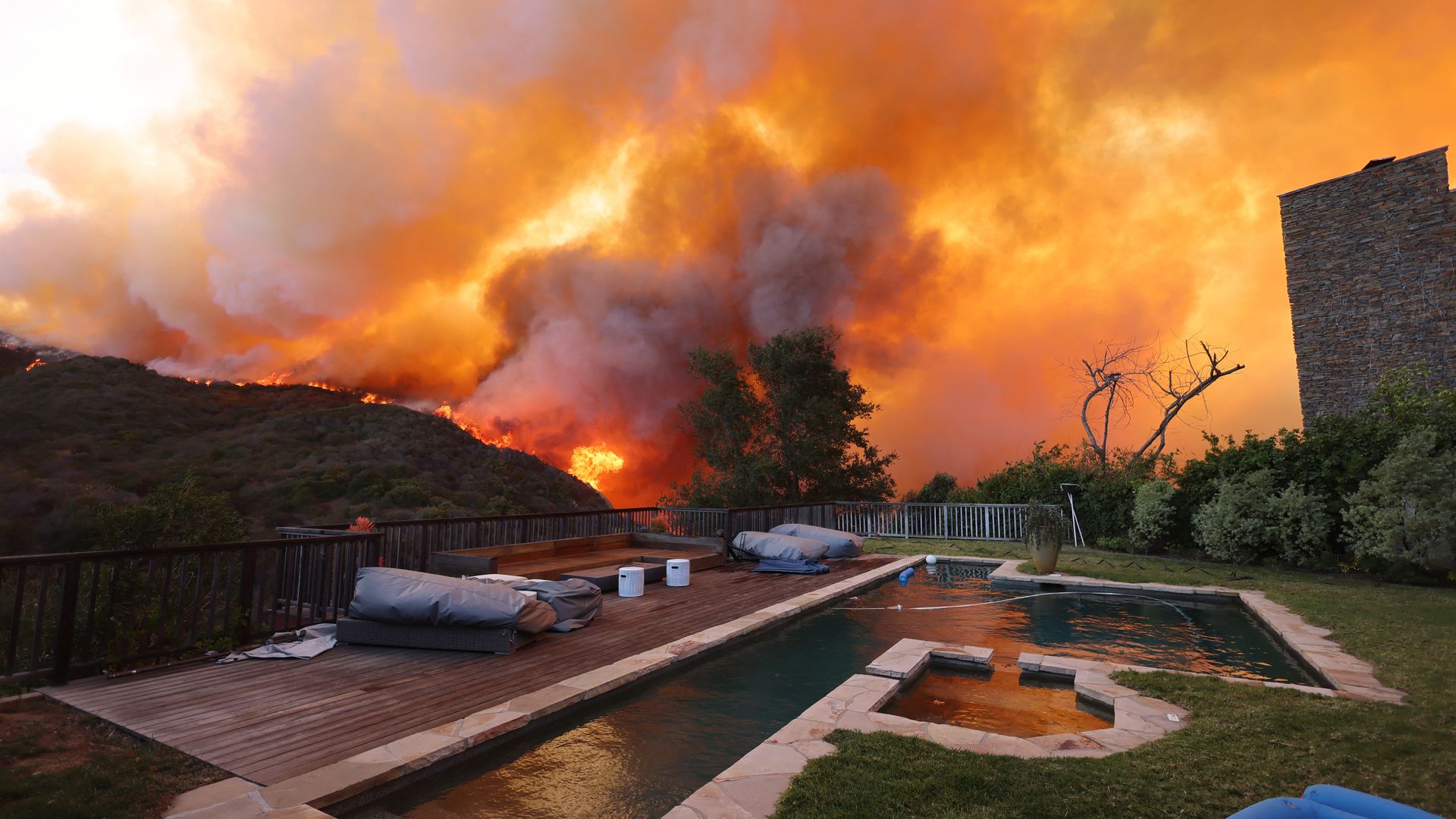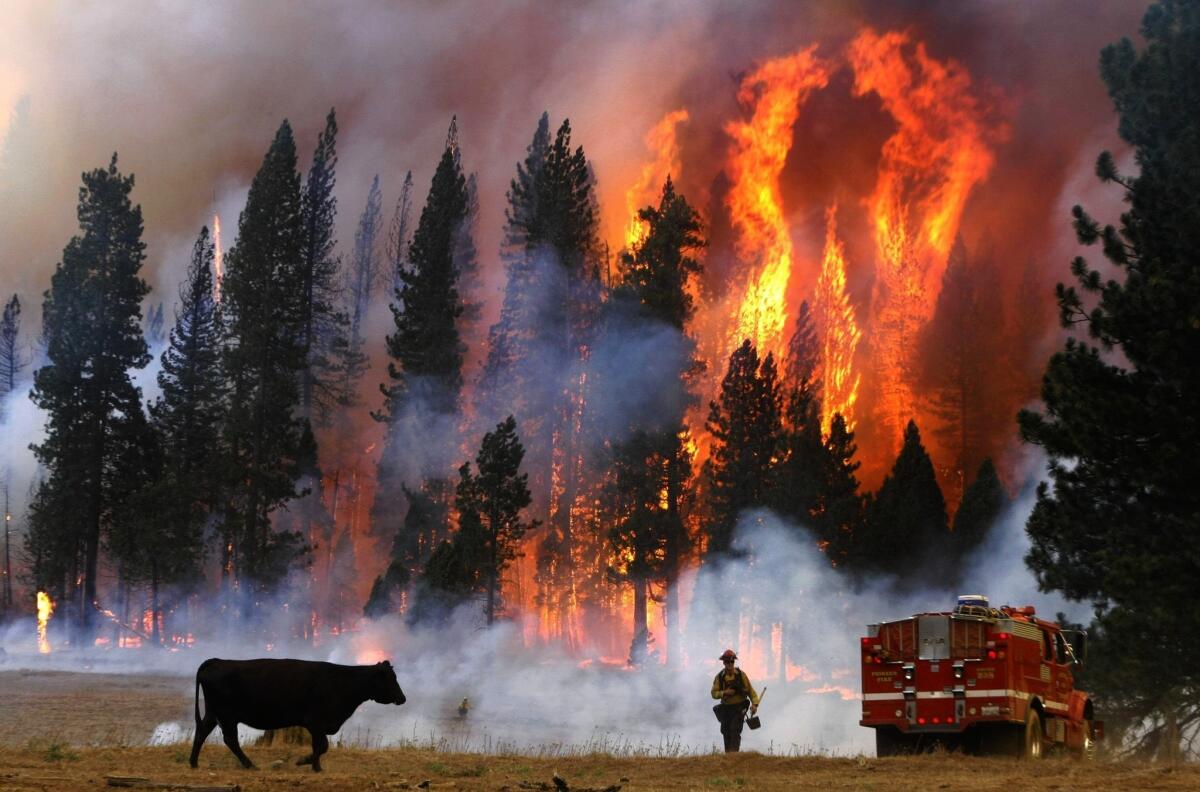At least 16 people have died and more than 12,000 structures have been reduced to ashes as wildfires fanned by hurricane-force winds continue to devastate the Los Angeles region.
Authorities on Sunday confirmed that over 153,000 residents are under mandatory evacuation orders, while 57,000 structures remain at immediate risk. Another 166,000 people are on evacuation warnings, with officials bracing for further chaos as strong winds are forecast to return early next week.
The Palisades Fire, the largest of four active blazes in Los Angeles County, has burned through 22,000 acres, destroying over 5,000 structures, including 426 homes.

Officials report that the fire is only 11% contained, with steep terrain and erratic winds complicating firefighting efforts.
Firefighters are battling against time to prevent the flames from spreading into densely populated areas, including Mandeville Canyon, the San Fernando Valley, and Brentwood, home to several high-profile celebrities.
Firenado caught on camera
A dramatic "firenado" was captured near the Palisades Fire on Saturday, with footage showing a vortex of flames spinning out of control. Fire whirls, or fire devils, occur when intense heat creates a spinning column of fire, smoke, and debris.
The blaze has been described as "a monster with a lot of different heads" by David Ortiz of the Los Angeles Fire Department. Despite firefighters' best efforts, the flames continue to engulf homes and force evacuations.
Grim toll expected to rise
In addition to the 16 confirmed fatalities, the Los Angeles County Sheriff's Department reported that 13 people are missing. Search teams, aided by cadaver dogs, are conducting systematic house-to-house searches in burned-out neighborhoods.
The fires, which began on January 7, have scorched approximately 39,000 acres—an area larger than San Francisco—and caused an estimated $150 billion in damages, making this one of the costliest wildfire disasters in U.S. history.
Federal aid underway
President Joe Biden has declared a major disaster in the region, enabling federal aid through FEMA. Neighboring states, along with Canada and Mexico, have dispatched firefighting teams and equipment to assist overwhelmed local crews. Aerial operations are also ongoing, with planes dropping water and fire retardant over the affected areas.

While the ferocious Santa Ana winds eased briefly on Friday night, officials warn that they could return with gusts of up to 70 mph, further spreading the flames. Fire Chief Anthony Marrone noted that the dry air and parched vegetation have created ideal conditions for the fires to thrive.
“The next 48 hours will be critical,” Marrone said during a press conference.
Evacuated residents face uncertainty as entire neighborhoods have been reduced to smoldering ruins. The Palisades Fire alone has wiped out whole communities, leaving many displaced residents grappling with the loss of their homes and belongings.
Despite the grim outlook, authorities and firefighters remain determined. “We need to be aggressive out there,” said Cal Fire Operations Chief Christian Litz, highlighting ongoing efforts to prevent further destruction in areas near the UCLA campus and the heavily populated San Fernando Valley foothills.
As Los Angeles battles its worst wildfire disaster in history, the resilience of the affected communities remains a beacon of hope amidst the devastation.




























